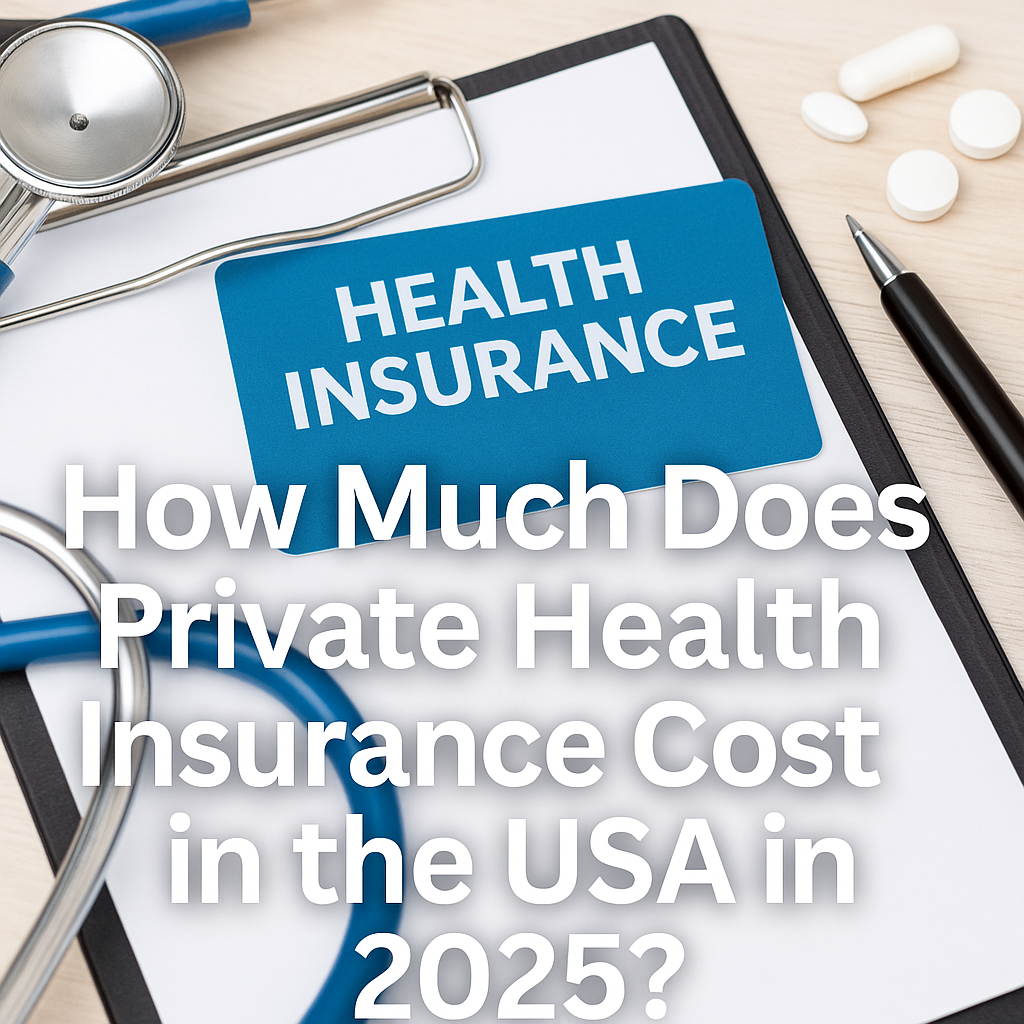How Much Does Private Health Insurance Cost in the USA in 2025?

Understanding how much private health insurance actually costs in the United States can feel confusing — especially in 2025, when prices continue to change and coverage options vary widely by state and provider. Whether you're self-employed, between jobs, or just looking to switch from a group plan, knowing the average cost and what influences it is essential.
This guide breaks down the real numbers behind private health insurance costs in 2025 and helps you understand what you’re really paying for.
💰 Average Monthly Cost of Private Health Insurance in 2025
In 2025, the average monthly cost of a private health insurance plan in the U.S. is around:
- $470/month for individual coverage
- $1,250/month for family coverage
These numbers can vary significantly based on your age, state, plan type, coverage level, and whether or not you qualify for subsidies.
📊 Cost by Plan Type
| Plan Type | Monthly Premium (Individual) | Monthly Premium (Family) | Deductible Range |
|---|---|---|---|
| HMO | $400 – $500 | $1,000 – $1,400 | $2,000 – $6,000 |
| PPO | $450 – $600 | $1,200 – $1,600 | $1,000 – $4,000 |
| EPO | $420 – $550 | $1,100 – $1,450 | $2,500 – $5,000 |
| Catastrophic | $250 – $350 | N/A | $8,700+ |
Note: PPO plans are the most flexible, while HMOs are usually more affordable but have stricter networks.
📍 How Costs Vary by State
Private insurance premiums can differ greatly depending on where you live:
| State | Avg. Monthly Premium (Individual) |
|---|---|
| California | $480 |
| Texas | $460 |
| New York | $520 |
| Florida | $470 |
| Illinois | $450 |
States with high living costs tend to have higher premiums. Also, states that expanded Medicaid may have more competitive pricing.
1. Age
Older adults pay more — a 60-year-old may pay up to 3x more than a 30-year-old for the same plan.
2. Location
Urban areas with more healthcare providers tend to have lower prices than rural areas.
3. Tobacco Use
If you smoke, expect to pay 10–50% more for private health insurance.
4. Plan Category
Plans come in four “metal tiers”:
- Bronze: Lowest premiums, highest out-of-pocket
- Silver: Balanced option with some subsidies
- Gold: Higher premiums, better coverage
- Platinum: Highest premiums, lowest out-of-pocket costs
5. Household Size and Income
If you’re using the ACA marketplace, your income level and family size determine if you qualify for subsidies.
🧮 Example: Estimating Total Yearly Costs
Let’s say you’re a 35-year-old freelancer in Florida with a Silver plan:
- Monthly premium: $470
- Annual premium: $5,640
- Deductible: $3,000
- Total possible yearly cost (if you use a lot of care): ~$8,640
Add copays and prescriptions, and your real spending could be higher.
💡 Tips to Save Money on Private Insurance
- Apply for ACA subsidies via Healthcare.gov.
- Consider a high-deductible plan + HSA to reduce taxable income.
- Shop around every year — don’t auto-renew without comparing prices.
- Use telehealth to save on visits and avoid emergency rooms for minor issues.
📚 Frequently Asked Questions
Is private insurance more expensive than ACA marketplace plans?
Yes — unless you qualify for subsidies. But private plans may offer better networks and faster service.
Can I pay less if I’m self-employed?
Yes. Self-employed individuals can often deduct premiums from their taxes.
Does private insurance cover everything?
It depends on the plan. Some include dental, vision, and mental health. Others are barebones unless you add optional coverage.
Can I get private insurance if I have a pre-existing condition?
Yes. Since the ACA, private insurers cannot deny you for pre-existing conditions — but pricing may still vary.
Knowing the true cost of private health insurance is the first step toward finding a plan that fits your life and your budget. In 2025, there are more options than ever, but doing your research will help you avoid surprises and make smarter healthcare decisions.
Leave a Reply